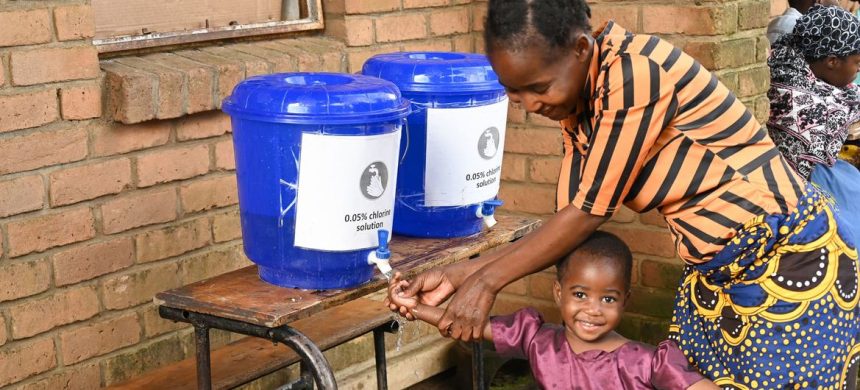A severe cholera outbreak is currently ravaging communities in Southern Africa, spreading across borders in what experts say is the worst such crisis involving the illness that the region has seen in a decade.
Thousands of people have died, and thousands of others have been infected with the acute diarrheal disease in at least seven countries. In some of the hardest-hit countries, the outbreak forced millions of students to stay back home in January.
Across the region, emergency response centres have sprung up in school fields and stadiums, and are teeming with groaning patients in pain. Fears are mounting that if the outbreak is not tackled soon, healthcare staff could be overwhelmed.
In an emergency summoning to address the outbreak earlier this month, leaders of the Southern African Development Community (SADC) said they were working to stop the spread, but a lack of clean water, weak cross-border checks, and a global shortage of vaccines could test that resolve.
Here’s a breakdown of what’s causing the spread and how many people have been affected:
How widespread is the outbreak?
Caused by the vibrio cholerae bacteria, cholera infects the small intestine, producing toxins that the body works hard to expel by secreting large amounts of vomit or watery diarrhoea, leading to rapid dehydration. Mild cases can disappear after a few days of oral rehydration treatment, but in severe cases – approximately one in 10 – it could lead to death within a day if left untreated.
Since January 2022, at least 188,000 people have been infected with cholera across seven countries in Southern Africa: Zambia, Zimbabwe, Malawi, Mozambique, Tanzania, South Africa and the Democratic Republic of Congo. More than 4,100 people have died, according to the UN humanitarian agency, OCHA.
The disease has been spreading since 2022. Although badly hit Zambia only reported its first case in October 2023, more than 18,804 people were infected by Thursday, in what authorities say is the country’s worst outbreak ever. At least 658 people have died since October.
Malawi, with at least 59,000 cases since early 2022, is also reporting its largest cholera outbreak ever. In Zimbabwe, 21,000 cases since February 2023 make this epidemic the second-worst on record. DRC, which is also a member of the SADC, has the highest number of infections at 71,000, while South Africa has recorded the lowest number of cases, at 1,076 people.
Monthly cases across the affected countries hovered around 2,000 infections since January 2023, but then peaked in January 2024 at 3,400 cases, suggesting higher transmission levels going into February.
What’s fuelling this outbreak?
Cholera typically spreads when people ingest water or food that’s contaminated. The disease is common in areas with poor sanitation, or in conflict zones where drinking water sources might be contaminated with faecal matter or wastewater from sewers.
Although endemic to Africa and parts of Asia, experts say it’s rare for several countries to experience outbreaks simultaneously, as is the case in southern Africa. The outbreak was likely triggered by a cocktail of issues, rather than a single event.
Regular, unchecked cross-border movement, for example, means infections can be transported: One 2023 study found that two sisters who had travelled from South Africa to a cholera hot spot in Malawi infected a third person on their return and that the strain that is currently spreading is originally from South Asia. While it’s rare for people to transfer the infection through casual contact, poor hygiene can lead to faecal matter from an infected person contaminating food meant for others.
Poor sewage systems, alongside inadequate clean water sources for drinking, cooking and hygiene are also a persistent problem in the region. More than half of the population in rural communities in Southern African countries — except for South Africa and Eswatini, formerly known as Swaziland — have no access to sanitation facilities like toilets (PDF). In South Africa, researchers say 80 percent of wastewater systems need upgrading.
Increasingly frequent and more severe flooding linked to climate change has an impact too, experts have said. Anja du Plessis of the University of South Africa (UNISA) told Al Jazeera that cholera occurs more in the rainy season, which the region is currently experiencing. Flooding “results in more run-off containing more pathogens, increasing the risk of contamination,” she said. Cyclone Kenneth tore through Madagascar, Mozambique, Malawi, and Zimbabwe, in March 2023, and likely worsened cholera transmission.
At the moment, cholera vaccines used both preventively and reactively are scarce, forcing the World Health Organization (WHO) to abandon the usual two-dose oral application for a single dose. Some 29 countries reported cholera outbreaks in 2022, an increase from the average of 20 reporting countries annually.
That uptick has stretched the estimated 36 million doses available yearly. There’s only one available manufacturer of the dose at the moment – South Korean firm EuBiologics — and it’s already producing at maximum capacity, according to WHO. While two doses of the vaccine can stop cholera for about three years, one dose reduces the immunity period to between six months and two years.
How are SADC countries responding?
At an emergency summit on February 2, SADC leaders promised to increase funding for water systems and to work on a cross-country response plan to monitor cholera spread, especially after climate change-linked natural disasters. The leaders also aim to start manufacturing cholera vaccines regionally, although they acknowledged they don’t have enough resources to buy medical supplies like test kits.
But some are sceptical and say community-based campaigns in the short term might be more effective than SADC’s plans. “The response so far has been poor [and] we will have to see if their words are transformed into action,” du Plessis of UNISA said. “We can however not depend and wait on the governments to take action. Communities should be properly informed on WASH [water and sanitation hygiene] facilities and practices so that the rate of the outbreak can be curbed.”
In Zambia, authorities delayed January school resumption for four million students by about a month so they could install handwashing stations. As school opened in February, flyers went up on walls teaching students about the disease and urging them to wash their hands before handling food.
Although authorities there announced continuing talks with the WHO to ship in more vaccines in January, those doses have not arrived yet. Meanwhile, the Africa Center for Communicable Diseases (Africa CDC) has pledged a one million dollar intervention fund for Lusaka to train health workers and buy medical supplies.
On a list of several worries is the rainy season which will last through February. Forecasts predicted normal to above-normal rainfall this season, meaning there could be an uptick in infections. In early February, UNICEF said severe flooding in the DRC might escalate the outbreak there and could see infections transported to densely populated cities.



